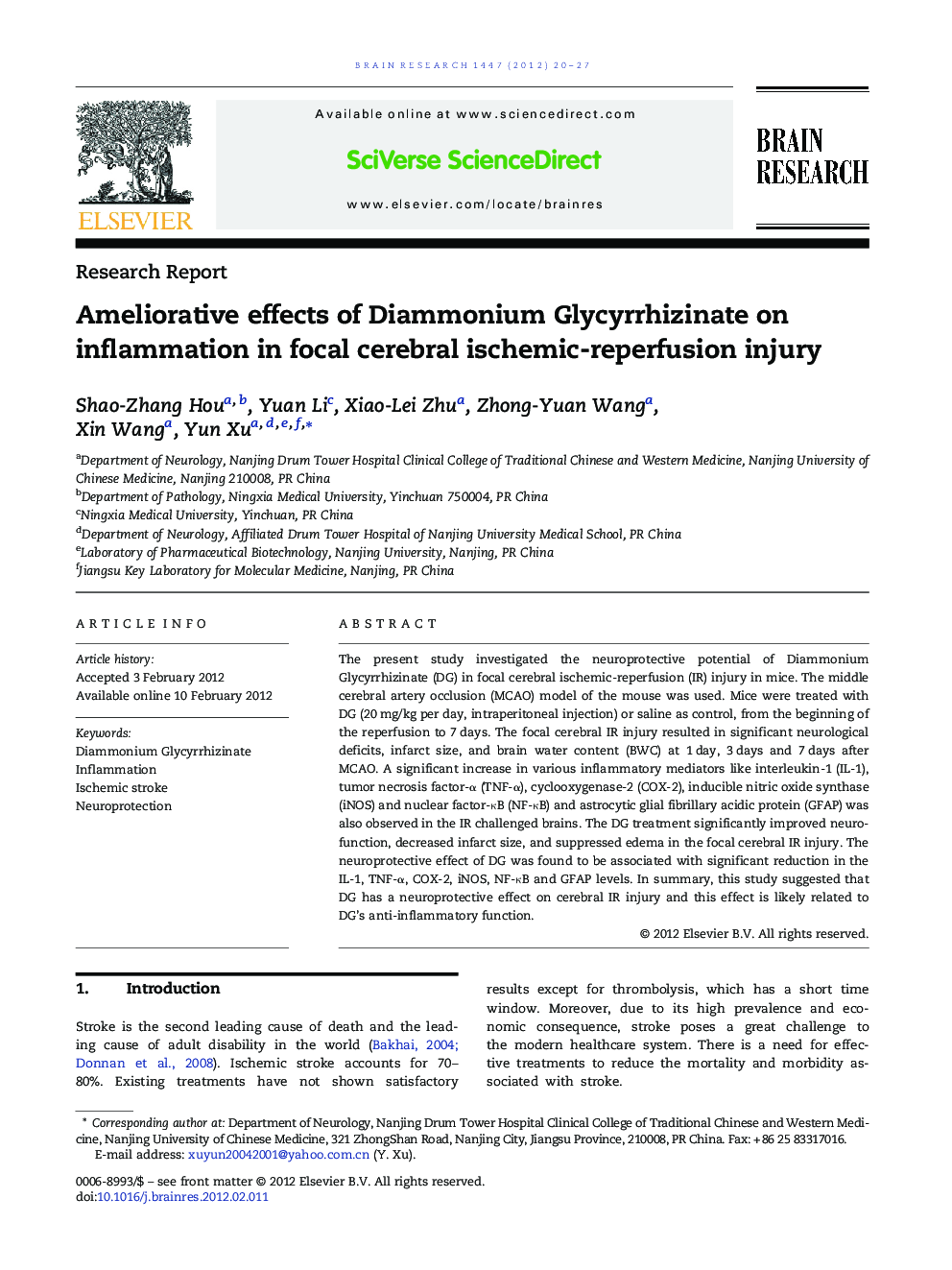| Article ID | Journal | Published Year | Pages | File Type |
|---|---|---|---|---|
| 4325310 | Brain Research | 2012 | 8 Pages |
The present study investigated the neuroprotective potential of Diammonium Glycyrrhizinate (DG) in focal cerebral ischemic-reperfusion (IR) injury in mice. The middle cerebral artery occlusion (MCAO) model of the mouse was used. Mice were treated with DG (20 mg/kg per day, intraperitoneal injection) or saline as control, from the beginning of the reperfusion to 7 days. The focal cerebral IR injury resulted in significant neurological deficits, infarct size, and brain water content (BWC) at 1 day, 3 days and 7 days after MCAO. A significant increase in various inflammatory mediators like interleukin-1 (IL-1), tumor necrosis factor-α (TNF-α), cyclooxygenase-2 (COX-2), inducible nitric oxide synthase (iNOS) and nuclear factor-κB (NF-κB) and astrocytic glial fibrillary acidic protein (GFAP) was also observed in the IR challenged brains. The DG treatment significantly improved neurofunction, decreased infarct size, and suppressed edema in the focal cerebral IR injury. The neuroprotective effect of DG was found to be associated with significant reduction in the IL-1, TNF-α, COX-2, iNOS, NF-κB and GFAP levels. In summary, this study suggested that DG has a neuroprotective effect on cerebral IR injury and this effect is likely related to DG's anti-inflammatory function.
► The study investigated the neuroprotective effect of Diammonium Glycyrrhizinate. ► The effect is likely related to Diammonium Glycyrrhizinate's anti-inflammatory function. ► The focal cerebral ischemic-reperfusion injury model was used in mice. ► The levels of IL-1, IL-6, TNF-α, COX-2, iNOS, NF-κB and GFAP were observed.
